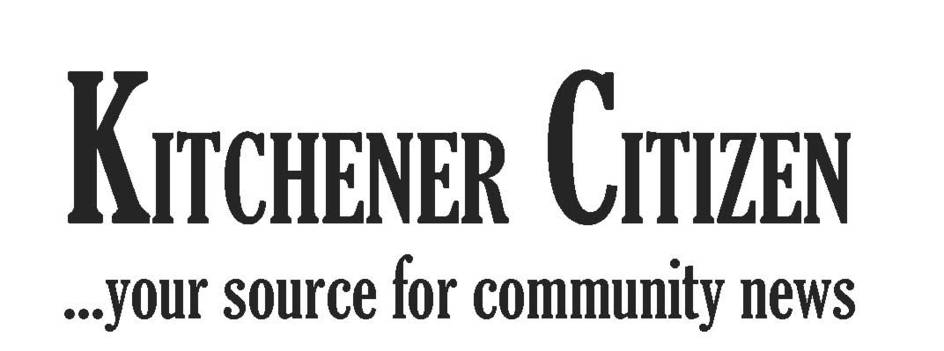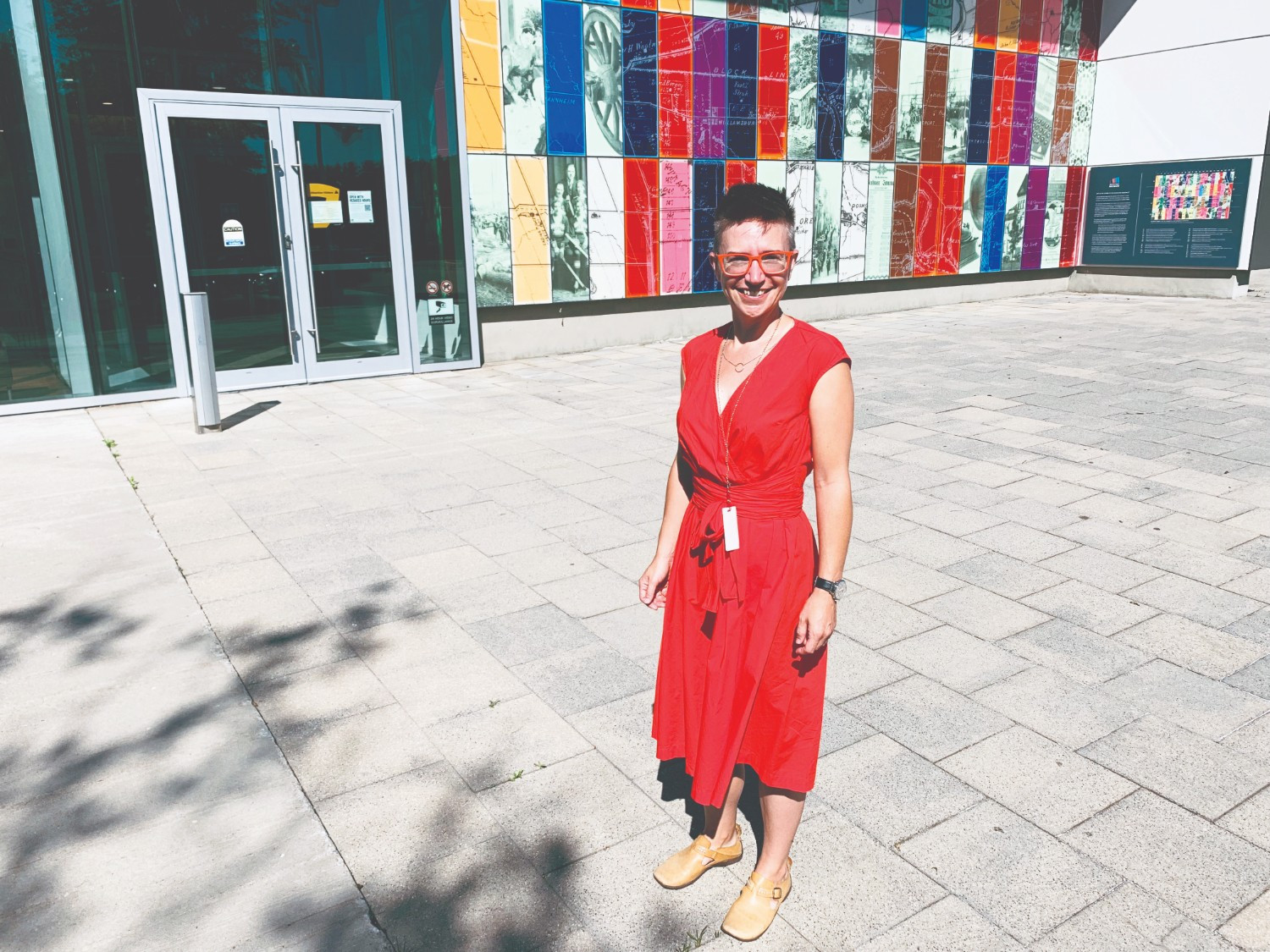

FINDING NEW OPPORTUNITIES TO CONNECT
Cultural sector struggles to reinvent itself amid pandemic
Cultural sector struggles to reinvent itself amid pandemic
For News Tips & Advertising call...
Kitchener East - 519-578-8228
Kitchener West - 519-394-0335
 By Carrie Debrone
By Carrie DebroneKitchener Citizen
August 20, 2020
The continuing COVID-19 pandemic has presented challenges to every sector of our economy, but the one that many see as hardest hit is the cultural sector.
Museums, libraries, theatres and entertainment venues have to reinvent themselves if they are to survive.
Helen Chimirri-Russell, who has been Director of Cultural Services for the Region of Waterloo for the last three years, said reopening the Ken Seiling Waterloo Region Museum is an example of what local cultural centres now face when they think about how to best connect with the community. When COVID-19 hit right before March break, museum staff continued to hold onto the hope that its March break children’s
camps would still go ahead.
“We held on as long as we could, but within a few weeks the region was considering shutting down its offices and then museums and libraries, and any public space run by the region became almost the first things to close,” Chimirri-Russell said.
“We thought initially that we might just be closed for a few weeks, but we soon realized that we would be closed for much longer.” What does it mean when a large public space like a museum building cannot be used?
“We’ve asked ourselves this question many times, and continue to ask it,” she said, adding that staff had to look at how to use the space as a place to share information to help the community. “We asked ourselves how do we continue to connect with people when we can’t have people in our building. What is our relevance and what does our community need from us when there’s a crisis. We started to reach out by delivering more social media content,” she said. Noting that the museum had no local information or artifacts from the time of the last major pandemic – the Spanish Flu pandemic of 1918 – Chimirri-Russell said museum staff agreed they needed to start collecting stories from the current pandemic, as well as signs, posters, masks and any other items that are in popular use now.
They are still working out how to safely collect some of the physical items in use, but the museum’s request for people’s personal stories on how they are coping with the pandemic have been pouring in. Staff set up a Help Us Make History section on its website and Chimirri-Russell said the museum now has collected hundreds of local stories.
The website asks people to write about the ways that COVID-19 has affected them at home, school and work, how local businesses are adapting or closing, struggles of family members infected with the virus, stories of everyday heroes (i.e. essential workers and people helping neighbours during self-isolation), the creative ways that people are now celebrating milestone birthdays or anniversaries, positive outcomes people have experienced during the pandemic, and when people think it will end and to predict how our community will be changed when it does end.
“We had a lot of high school students writing in and just saying, ‘this sucks.’ But others have written about what it felt like to be alone and isolated, what it was like to see faces on computer screens but no one in person, and describing the feeling that nothing is normal,” Chimirri-Russell said.
“The stories quickly changed from how it was affecting them personally to how it was affecting the community as a whole. We hope this collection of stories will tell how we can respond to a pandemic or a large crisis,” she said. The museum also considered doing virtual tours of their galleries, but came to the realization that what people really missed was physically walking through the galleries.
“So we thought about how we could bring our galleries to life,” she said, and once again the answer was found in stories. For example, the WRM’s website now contains a story from the history books of Schneider Haus about a boy who was left in the home to make sure the stove would not go out. The stove did go out and the story is about how he had to go to a neighbour’s house a long way away from the Schneider Haus to get another flame to relight the stove.
“Giving people those nostalgic moments is valuable and creates a strong connection in people today,” she said.
The story of what the former inhabitants of Schneider Haus used for toilet paper really resonated in the current pandemic as grocery stores experienced huge shortages of toilet paper at the beginning of the crisis. “You could kind of turn that crisis on its head by telling or educating people about how our ancestors coped with having no toilet paper,” Chimirri-Russell said.
The Waterloo Region Museum re-opened its main gallery exhibit What Makes Us Who We Are? on August 8 with reduced operating hours. Timed tickets are available for 90-minute visits and capacity is limited to enable safety protocols that include physical distancing and increased cleaning. Visitors can also stroll through Doon Heritage Village for a walk in the park experiences, but the village buildings remain closed as they are too small to accommodate visitors within public health guidelines. Chimirri-Russell said creating a welcoming space for visitors means something different than it did before.
“Peoples’ desire to congregate is gone and safety has become a priority. We had to see our space through a different lens and our sense of ‘welcome’ is always being reassessed. It’s been really challenging because our tools are always changing.” But, she said, COVID-19 also gave opportunities to try different things and to provide history to the public in a different way.
“When they told us to open up again, we had to think about how many people could be in the museum at a time, how to safely distance everyone, the role of staff, how to offer ticket sales online, and how to sanitize things.
The museum’s long-term gallery has lots of interactive items, but artifacts can’t be wiped down with sanitizer to clean them after every touch because the chemicals in the sanitizer will quickly degrade the items. Sanitizers could also easily damage the historical countertops and other surfaces in the Doon Village historical buildings, so that is another reason why they remain closed for now.
Chimirri-Russell said the village right now also has no horses, goats, cows, sheep, chickens or pigs that are usually there.
“We really miss having the animals here, and the visitors really miss them too,” she said. Waterloo Region Museum had 1,200 visitors in July. It is operating on reduced hours - open Thursday. Friday, Saturday and Sunday, noon to 4pm.
Still, Chimirri-Russell realizes she and her staff are lucky. Because the region funds the museum, it had the luxury of having funds to get things up and running fairly quickly while many privately owned cultural businesses are struggling to open again. “The performing arts are still not able to do their jobs. Audiences cannot gather in the same way, and how to deliver live entertainment safely but still provide a vibrant experience for audiences is a challenge that the arts around the world is having to deal with,” she said.
What does Chimirri-Russell miss most since COVID-19 struck? “A sense of normalcy. We were very good at what we did and knew how to do it. Now there are new challenges every day. I miss the human contact too, and it seems we have fewer opportunities to connect with other people as human beings,” she said.
* * *
Share your written accounts (.doc or .pdf), photographs (.jpg), or video recordings (mp3, mp4, wav, or mov) about your Covid experiences by emailing them to helpusmakehistory@regionofwaterloo.ca with the subject line “Writing COVID-19 History”. Please include your name, age, and your city/town of residence. Staff will be in touch for more information after you email. Your submissions may be shared via social media, on the museum’s website, and/or in future exhibitions with your permission.
Helen Chimirri-Russell, Director of Cultural Services for the Region of Waterloo, stands in front of the Ken Seiling Waterloo Region Museum. Navigating the challenges brought on by COVID-19 has meant reinventing the way things are done by the cultural sector.